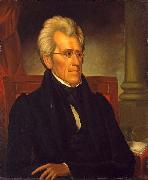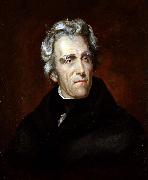Wholesale Oil Painting No Minimum |
|||||||||||
|
|
|||||||||||

|
|||||||||||
|
|
|
||||||||
John Vanderlyn1775-1852 John Vanderlyn (October 18, 1775 ?C September 23, 1852) was a American neoclassicist painter, was born at Kingston, New York. He was employed by a print-seller in New York, and was first instructed in art by Archibald Robinson (1765-1835), a Scotsman who was afterwards one of the directors of the American Academy. He went to Philadelphia, where he spent time in the studio of Gilbert Stuart and copied some of Stuart's portraits, including one of Aaron Burr, who placed him under Gilbert Stuart as a pupil. He was a proteg?? of Aaron Burr who in 1796 sent Vanderlyn to Paris, where he studied for five years. He returned to the United States in 1801 and lived in the home of Burr, then the Vice President, where he painted the well-known likeness of Burr and his daughter. In 1802 he painted two views of Niagara Falls, which were engraved and published in London in 1804. He returned to Paris in 1803, also visiting England in 1805, where he painted the Death of Miss McCrea for Joel Barlow. Vanderlyn then went to Rome, where he painted his picture of Marius amid the Ruins of Carthage, which was shown in Paris, and obtained the Napoleon gold medal there. This success caused him to remain in Paris for seven years, during which time he prospered greatly. In 1812 he showed a nude Ariadne (engraved by Durand, and now in the Pennsylvania Academy), which increased his fame. When Aaron Burr fled to Paris, Vanderlyn was for a time his only support. Vanderlyn returned to the United States in 1815, and painted portraits of various eminent men, including Washington (for the U.S. House of Representatives), James Monroe, John C. Calhoun, Governor Joseph C. Yates, Governor George Clinton, Andrew Jackson, and Zachary Taylor. He also exhibited panoramas and had a "Rotunda" built in New York City which displayed panoramas of Paris, Athens, Mexico, Versailles (by himself), and some battle-pieces; but neither his portraits nor the panoramas brought him financial success, partly because he worked very slowly. In 1842, through friendly influences, he was commissioned by Congress to paint The Landing of Columbus. Going to Paris, he hired a French artist, who, it is said, did most of the work. It was engraved for the United States five-dollar banknotes. He died in poverty at Kingston, New York, on 23 September 1852. Vanderlyn was the first American to study in France instead of in England, and to acquire accurate draughtsmanship. He was more academic than his fellows; but, though faithfully and capably executed, his work was rather devoid of charm, according to the 1911 Encyclopaedia Britannica. His Landing of Columbus has been called (by Appleton's Cyclopedia) "hardly more than respectable." His other works include portraits of Monroe, and Robert R Livingston (New York Historical Society). |
||||||||
|
|
||||||||
Andrew Jackson
Andrew Jackson Painting ID:: 51349 |
mk218
1828
52.4x37.9cm
mk218 1828 52.4x37.9cm |
|||||||
|
|
||||||||
Ralph Eleaser Whiteside Earl(1785-8 - Nashville, Tennessee, September 16, 1838), also known as Ralph E. W. Earl or Ralph Eleazer Whiteside Earl, was an American painter known as the "court painter" to President Andrew Jackson. Earl was the son of portrait painter Ralph Earl and his second wife Ann Whiteside. He was born c. 1785-88, probably in New York City, and likely received his early training in portraiture from his father, whose naive style is reflected in the younger Earl's earliest works. He traveled to London in 1809, where he studied for a year with John Trumbull and was advised by Benjamin West, learning perspective, anatomy, and three-dimensional illusion. He remained in England until 1814, living with his maternal grandfather and uncle in Norwich and executing portrait commissions. He then traveled to Paris before returning to the United States in December 1815 with the intention of creating grand-scale history paintings on the European model. As preparation for a planned project depicting the Battle of New Orleans, Earl met General Andrew Jackson and visited him at his Tennessee home, The Hermitage, in January 1817. Earl painted portraits of Jackson and his family, and married Mrs. Jackson's niece Jane Caffery on 19 May 1819. She died in childbirth in 1820. |
||||||||
|
|
||||||||
|
|
Andrew Jackson
Andrew Jackson Painting ID:: 91825 |
circa 1830-32
Medium oil on panel
Dimensions 30 x 24 3/4 in. (76.2 x 62.9 cm)
cjr circa 1830-32 Medium oil on panel Dimensions 30 x 24 3/4 in. (76.2 x 62.9 cm) cjr |
||||||
|
|
||||||||
Thomas Sully1783-1872 Thomas Sully Galleries Sully became a professional painter at age 18 in 1801. He studied face-painting under Gilbert Stuart in Boston for three weeks. After some time in Virginia with this brother, Sully moved to New York, after which he moved to Philadelphia in 1806, where he resided for the remainder of his life. In 1809 he traveled to London for nine months of study under Benjamin West. Sully's 1824 portraits of John Quincy Adams, who became President within the year, and then the Marquis de Lafayette appear to have brought him to the forefront of his day. (His Adams portrait may be seen in the National Gallery of Art, Washington.) Many famous Americans of the day had their portraits painted by him. In 1837-1838 he was in London to paint Queen Victoria at the request of Philadelphia's St. George's Society. His daughter Blanche assisted him as the Queen's "stand-in", modeling the Queen's costume when she was not available. One of Sully's portraits of Thomas Jefferson is owned by the Jefferson Literary and Debating Society at the University of Virginia and hangs in that school's Rotunda. Another Jefferson portrait, this one head-to-toe, hangs at West Point, as is his portrait of Alexander Macomb (American general). Sully's own index indicates that he produced 2631 paintings from 1801, most of which are currently in the United States. His style resembles that of Thomas Lawrence. Though best known as a portrait painter, Sully also made historical pieces and landscapes. An example of the former is the 1819 Passage of the Delaware, now on display at the Museum of Fine Arts, Boston. |
||||||||
|
|
||||||||
|
|
Andrew Jackson
Andrew Jackson Painting ID:: 93939 |
Date 1824
TTD Date 1824 TTD |
||||||
|
|
||||||||
|
Thomas Sully 1783-1872 Thomas Sully Galleries Sully became a professional painter at age 18 in 1801. He studied face-painting under Gilbert Stuart in Boston for three weeks. After some time in Virginia with this brother, Sully moved to New York, after which he moved to Philadelphia in 1806, where he resided for the remainder of his life. In 1809 he traveled to London for nine months of study under Benjamin West. Sully's 1824 portraits of John Quincy Adams, who became President within the year, and then the Marquis de Lafayette appear to have brought him to the forefront of his day. (His Adams portrait may be seen in the National Gallery of Art, Washington.) Many famous Americans of the day had their portraits painted by him. In 1837-1838 he was in London to paint Queen Victoria at the request of Philadelphia's St. George's Society. His daughter Blanche assisted him as the Queen's "stand-in", modeling the Queen's costume when she was not available. One of Sully's portraits of Thomas Jefferson is owned by the Jefferson Literary and Debating Society at the University of Virginia and hangs in that school's Rotunda. Another Jefferson portrait, this one head-to-toe, hangs at West Point, as is his portrait of Alexander Macomb (American general). Sully's own index indicates that he produced 2631 paintings from 1801, most of which are currently in the United States. His style resembles that of Thomas Lawrence. Though best known as a portrait painter, Sully also made historical pieces and landscapes. An example of the former is the 1819 Passage of the Delaware, now on display at the Museum of Fine Arts, Boston. Andrew Jackson Date 1824 TTD |
||||||||
|
|
||||||||
|
Prev Next
|
||||||||
|
|
||||||||
|
Related Paintings to Thomas Sully :. |
||||||||
|
|
||||||||
|
CONTACT US |



